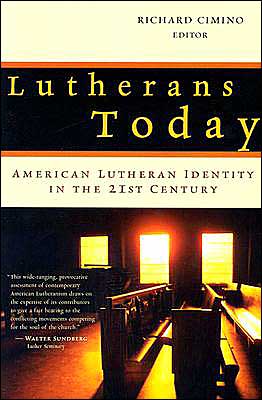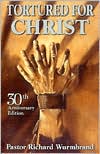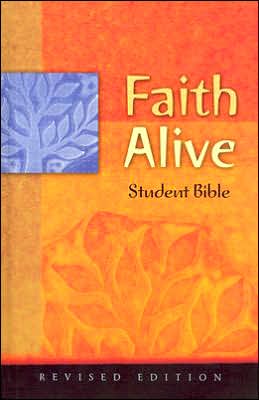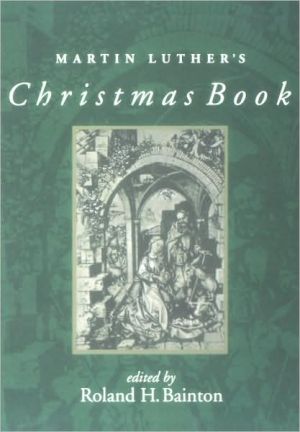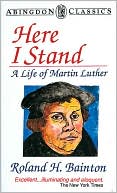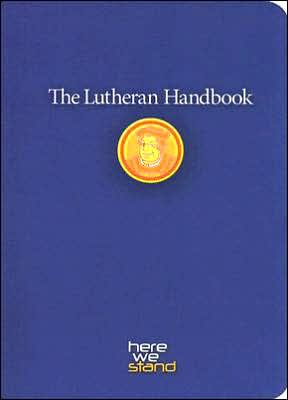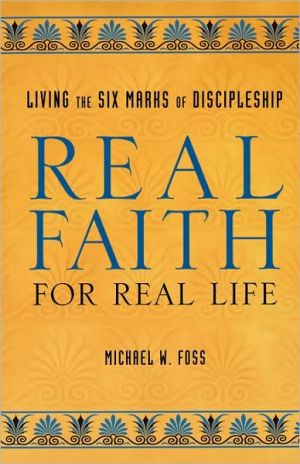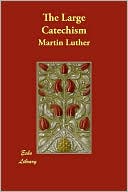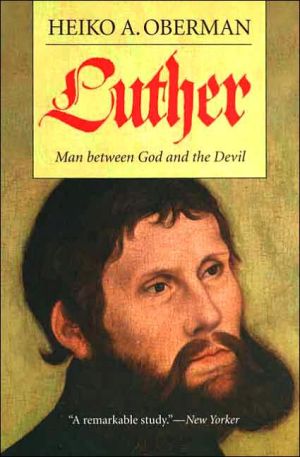Lutherans Today: American Lutheran Identity in the Twenty-First Century
In the middle of the twentieth century, American Lutherans were newsworthy enough to find themselves on the cover of Time magazine. Their claim to fame? In an era when American churches were beginning to look and act alike, Lutherans' strong confessional nature and stress on theology as well as their liturgy and ethnicity set them apart. They were "Protestants with a difference" at a time when differences were supposed to be dissolving in the American melting pot. Subsequent years have posed...
Search in google:
In the middle of the twentieth century, American Lutherans were newsworthy enough to find themselves on the cover of Time magazine. Their claim to fame? In an era when American churches were beginning to look and act alike, Lutherans' strong confessional nature and stress on theology as well as their liturgy and ethnicity set them apart. They were "Protestants with a difference" at a time when differences were supposed to be dissolving in the American melting pot. Subsequent years have posed serious questions to Lutheran identity, as disputes about the true nature of Lutheranism and the meaning of the Lutheran confessions, the structure of ministry, ecumenism, sexuality, and multiculturalism have all left their mark on Lutheran denominations. In Lutherans Today several historians, social scientists, journalists, and other leading experts map out the place of Lutheranism in the landscape of contemporary American Christianity and explore the directions in which it is heading in the new millennium. Presenting new and original research, the book is divided into two sections. The first examines change and movements within American Lutheranism. Distinguished church historian Mark Noll here sets the scene by arguing that the predicament of American Lutheranism has always been the struggle to remain faithful to the enduring witness of the European Reformation while also accommodating itself to the democratic pluralism of the New World. Six other chapters discuss the Missouri Synod, the "Lutheran Left," the Called to Common Mission agreement, the evangelical catholic movement within Lutheranism, the rise of "megachurches," and Lutheran charismatics. The second section considers trends and issues related to Lutheran identity, including politics and the pastorate, the impact of immigration and multiculturalism, the loss of Lutheran identity at Lutheran colleges and universities, and conflicting patterns of commitment among Lutheran youth. As a whole, Lutherans Today will be valuable not only to all Lutherans but also to those interested in the development and current state of religious life in America.
LUTHERANS TODAY\ American Lutherans Identity in the Twenty-First Century \ \ Williams B. Eerdmans Publishing Company\ Copyright © 2003 Wm. B. Eerdmans Publishing Co.\ All right reserved.\ ISBN: 0-8028-1365-8 \ \ \ \ Chapter One\ Change and Movements in American Lutheranism \ American Lutherans Yesterday and Today\ MARK NOLL\ In the United States, according to the 2002 Yearbook of American and Canadian Churches, there are now more than 19,000 Lutheran churches, ministered to by almost 29,000 clergy, and numbering an "inclusive membership" of about 8.5 million people. The number of Americans who describe themselves to pollsters as "Lutherans" is roughly twice as large as those whom the churches count in some kind of formal membership. This is a lot of Lutherans. But for the history of religion in America, not to speak of the more important history of Christianity in the world, it is not immediately clear what this sizable contingent of present-day American Lutherans signifies. One reason for ambiguity is the obvious fact that the total of American Lutherans is divided into at least three fairly distinctive sub-clusters. There are, first, a number of smaller Lutheran bodies marked by pietistic, confessional, or ethnic distinctives, like the Church of the Lutheran Brethren, the Evangelical Lutheran Synod, and the Latvian Evangelical Lutheran Church in America (in sum, about 4 percent of the churches, 1.5 percent of the constituency, and 3.5 percent of the ministers). Then there are two major confessional bodies, the Lutheran Church-Missouri Synod (LCMS) and the Wisconsin Evangelical Lutheran Synod (WELS), which, though they are nervous about each other, can be classified together because of a common insistence on strict adherence to the Augsburg Confession and a considerable degree of separation from other Christian groups, often especially other Lutheran groups. (Together, these two bodies contain about 39 percent of the churches, 38 percent of the constituents, and 35 percent of the ministers, with the LCMS four to five times as numerous in each category.) The largest sub-grouping is the Evangelical Lutheran Church in America (ELCA), the latest and grandest result of the amalgamating process that over the course of American history has witnessed increasingly more comprehensive denominations built out of the multitudes of ethnic, regional, and personality-driven individual Lutheran bodies that once inhabited the American landscape. The ELCA is a broad church where hereditary Lutheran practices and principles have been (depending on perspective) blessed or cursed by extensive engagement with modern American culture. Within American Lutheranism as a whole, its churches account for 57 percent of the total, its constituents for 60 percent, and its clergy for 61 percent.\ An even larger reason for ambiguity about what Lutheranism means in America concerns the bearing of the Lutheran past on the Lutheran present. The history of Lutheranism in America is complex primarily because Lutherans seem to have both easily accommodated to American ways of life, including religious ways of life, and never accommodated to American ways. Analysis of how accommodation and non-accommodation mark contemporary Lutheran life is the burden of the chapters making up this book, although their authors have better ways of framing that discussion than simply accommodation or non-accommodation. The task of this chapter, by contrast, is to provide some sense of history for the Lutheran presence in America; in addition, the chapter provides a brief opportunity for a non-Lutheran to say something, from an outsider's perspective, about the potential for Lutheranism in America.\ American Lutherans between the Old World and the New\ The historic source of Lutheran differences from the rest of American Protestantism is the Reformation itself. While most American denominations descend from the Reformed or Calvinist side of the Reformation - albeit in nearly infinite variety - Lutherans bear the stamp of their human founder. Following Martin Luther, Lutherans traditionally have stressed the biblical themes of Law and gospel. Lutherans typically ask how particular Scripture passages illuminate the standing of the reader before God in sin or grace, instead of seeking immediately (as most other American Protestants do) to discover their imperatives for action. On the Continent, Lutherans also developed a strong two-kingdoms theology in which a sharp divide was drawn between the proper business of the church in announcing sin and grace, and the proper business of the state in maintaining public order. Early polemics with Calvinists over the meaning of the Lord's Supper, and later skirmishing with Anabaptists and Baptists on the question of who should be baptized and at what stage of life, gave the Lutherans - who, of course, could also cite literal chapter and verse when it suited their needs - a habit of defending their distinctive views on the real presence of Christ in the Lord's Supper and baptismal regeneration for infants as much from the general meaning of the whole Bible as from the dictate of any one text.\ In the century before the ratification of the United States Constitution in 1789, about 120,000 German-speaking immigrants arrived in the thirteen colonies. By the 1790s there were nearly 250 Lutheran congregations in Pennsylvania and a scattering of other Lutherans in New York, Maryland, Virginia, and the Carolinas. From the beginning of immigration, Lutheran ministers, no less than their people, were relating old-world expectations to circumstances in the New. In particular, they were forced to adjust habits of political deference, aristocratic authority, religious uniformity, and liturgical worship to American tendencies toward democracy, republicanism, religious pluralism, and revivalism.\ by the time of the Revolution, Lutherans were being drawn closer to the web of political and social conceptions sustained by English-language colonists. The forces at work in this process of acculturation can be illustrated by the family of Henry Melchior Muhlenberg (1711-1787), patriarch of American Lutheranism who, after arriving from Halle, Germany, in 1742, oversaw the organization of a viable Lutheran presence in North America. Muhlenberg himself remained neutral in the struggle for American independence, though two of his sons enlisted for active service with the Patriots.\ During and after the Revolutionary War, Muhlenberg made a self-conscious accommodation to the assumptions of American public life. In 1763, he reported on how some parties in the Lutheran churches were insisting upon an "American liberty" to select their own pastors. Soon he passed from acknowledgment to acceptance, as in counsel to a fellow pastor in New York: "the English Constitution, the American climate, and many other considerations, demanded ... that each member in each community must have the right to vote or at least have a hand in voting." By the 1770s, in other words, German-speaking Lutherans, while not completely abandoning the social and political inheritance of their homelands, had begun to accommodate to American political realities.\ What he did not accommodate, however, was theology. Muhlenberg, in fact, continued to insist on theological fidelity to the Augsburg Confession and the liturgical practice of sacramental realism (belief in the saving power of baptism and communion that other Americans have always had difficulty distinguishing from Roman Catholic sacramental realism). In his dealings with German immigrants, many of whom were drifting away from their hereditary church, Muhlenberg consistently upheld his own seamless brand of pious orthodoxy. On the Lord's Supper, he warned against the extremes of Roman Catholic transubstantiation and against Reformed or Baptist memorialism. Especially in America, those who in celebrating the Lord's Supper wanted to "exchange the real for the shadow" became a major problem. Baptism, Muhlenberg insisted with similar loyalty to Lutheran tradition, was genuinely "a rebirth." Although baptism was not conversion, it did mean "being cut off from the guilty and corrupt family of Adam and being translated, ingrafted, or incorporated into Christ's kingdom of grace." Muhlenberg eventually became a skillful speaker of English, but the conceptual languages of the colonies did not exert a noticeable effect on the traditional language of his faith.\ Muhlenberg's successor as the leading American Lutheran, J. H. C. Helmuth, spoke out even more sharply than his predecessor about the need to retain Lutheran hermeneutics as well as Lutheran doctrine in the American sea of democratic individualism. In 1793 he registered a Lutheran protest to what, even at that time, was becoming the characteristic American approach to the Bible. Helmuth thought that it was "altogether harmful when someone reads his whims and fantasies into this holy book." This was, according to Helmuth, "to make a weathervane out of Scripture and so turn it in every direction of the imagination.... This is to play with the Bible as children play with a puppet. This is to explain Scripture as if the Holy Spirit must obey the bidding of the imagination of any old person, regardless of how confused. This is to make the Bible into a dark chaos." Treating the Bible like this meant for Helmuth that "the pure religion of Jesus is made an object of scorn and derision."\ After Helmuth, however, and before the massive German migrations of mid-century restored a stronger confessional emphasis, American Lutheran theology moved gradually in a more "American" direction. Frederick Henry Quitman of New York City was among the leading American Lutherans in the generation after Helmuth, but he breathed a quite different spirit. Quitman's catechism and hymnal, both published in 1814, revealed much less confessionalism, much more Americanization. Instead of traditional Lutheran insistence on the self-authenticating power of the living Word (Christ) as discovered in the written word (Scripture), Quitman's catechism set out "the grounds that ought to constitute the basis of rational belief" as "either natural perception and experience; or the authority of competent witnesses; or finally, unquestioned arguments of reason." Only later did Quitman bring in the Scriptures, but then insisted that everything having to do with the Bible and its testimony to Jesus as the Son of God needed to "coincide with the dictates of reason."\ Likewise, Quitman's hymnal featured Anglo-American tributes to the great designer of the moral universe more than the ardently Trinitarian hymns that had been customary in hymnals prepared by Muhlenberg. Thus, the first selection in Muhlenberg's hymnal had been a hymn of gracious salvation:\ Ach Herr Gott! gib uns deine Geist von oben,\ der uns beystand leist, im ohren und im lehren:\ vergib die Sund', andacht verlieh,\ das herz bereite, daß es sey munter zu deinen ehren.\ Oh Lord God! Give us your Spirit from above,\ who brings us aid for hearing and learning;\ forgive our sin, bring us to worship,\ prepare our heart to be joyful in your glory.\ With Quitman, by contrast, things began with a more Reformed\ (and also American) evocation of divine power:\ Before Jehovah's awful throne,\ Ye nations bow with sacred joy:\ Know that the Lord is God alone;\ He can create, and he destroy.\ In local situations during the first decades of the nineteenth century, Lutherans experienced the same tensions as Roman Catholic immigrants over how far to follow American norms of democratic republicanism. On the ground in Pennsylvania, some of the Lutherans, with also some German Reformed, eagerly embraced a Whig kind of American republicanism, while others held out for a more community-based traditionalism. Many of the latter were politically Democrats, often because of solicitude for old-world patterns of communal authority. Battles among Lutherans over church government frequently had a thoroughly American sound, as when in 1831 the Western Pennsylvania Synod urged support for denominational higher education since that kind of effort testified "to a church whose organization agrees entirely with the republican principles of your government."\ by the time of the Civil War, Lutheranism was burgeoning. Rising tides of German immigration and the firstfruits of an impending Scandinavian harvest joined the increasingly vigorous churches of the colonial period to constitute a substantial Lutheran presence in several American regions. The number of Lutheran churches grew from something less than 300 in 1790 to 1,217 in 1850 and then 2,128 in 1860. The formation of the Lutheran General Synod in 1820, and then the establishment of Gettysburg Theological Seminary, under the dynamic leadership of Samuel Schmucker, in 1826, testified to the Lutherans' growing institutional maturity.\ Schmucker (1799-1873), the most prominent American Lutheran voice from the founding of Gettysburg Seminary until the confessional surge of the mid 1850s, posed a problem by how moderately, yet also how resolutely, he pushed the process of Americanization. By the mid 1830s, Schmucker too was expressing high opinions of republican government and also championing the authority of common-sense reasoning. The work in which such opinions appeared was a popular apology written for those who might be suspicious of the Lutherans. It proceeded in what was then the common American pattern by first considering "the intellectual structures of man, the extent of the religion of reason, and the evidences of revelation," before beginning "the discussion of the Christian doctrines" proper. The same work also stressed that "the Lutheran divines are strenuous advocates for liberty of thought, and free, untrammeled investigation of God's word," and that principles of "moral government" provided the best possible way of understanding the doctrine of election. It also declared that the Augsburg Confession contained principles to justify the American Revolution, which was a reversal from the more quietistic interpretation of Augsburg that had become standard in Europe.\ In later public appeals on behalf of the Lutheran faith, Schmucker made the same sort of adaptation to the standard American hermeneutic: theology, he held, was "to be governed entirely by the word of God, interpreted according to the correct principles of common sense, which is the only true system of Historical Exegesis." And literal exegesis could only be set aside "when the passage literally interpreted contradicts natural reason, common sense, or the testimony of our senses." Schmucker is well known in American religious history for eventually proposing alterations to the Augsburg Confession that would have eliminated, or much reduced, the traditional Lutheran insistence on baptismal regeneration and the real presence of Christ in the Lord's Supper. In making these proposals he was following an "American" path that had been successful in broadening the appeal of Lutheranism beyond its traditional ethnic constituencies.\ \ Continues...\ \ \ \ Excerpted from LUTHERANS TODAY Copyright © 2003 by Wm. B. Eerdmans Publishing Co.. Excerpted by permission.\ All rights reserved. No part of this excerpt may be reproduced or reprinted without permission in writing from the publisher.\ Excerpts are provided by Dial-A-Book Inc. solely for the personal use of visitors to this web site. \ \
AcknowledgmentsIntroductionAmerican Lutherans Yesterday and Today3The Curious Case of the Missouri Synod26The Lutheran Left: From Movement to Church Commitment45Word Alone and the Future of Lutheran Denominationalism62The Evangelical Catholics: Seeking Tradition and Unity in a Pluralistic Church81Goliaths in Our Midst: Megachurches in the ELCA102Lutheran Charismatics - Renewal or Schism?125Pastors in the Two Kingdoms: The Social Theology of Lutheran Clergy143North American Lutheranism and the New Ethnics166Multiculturalism and the Dilution of Lutheran Identity187Integrity and Fragmentation: Can the Lutheran Center Hold?206Loose Bonds, Emerging Commitments: The Lives and Faith of Lutheran Youth222Contributors246
